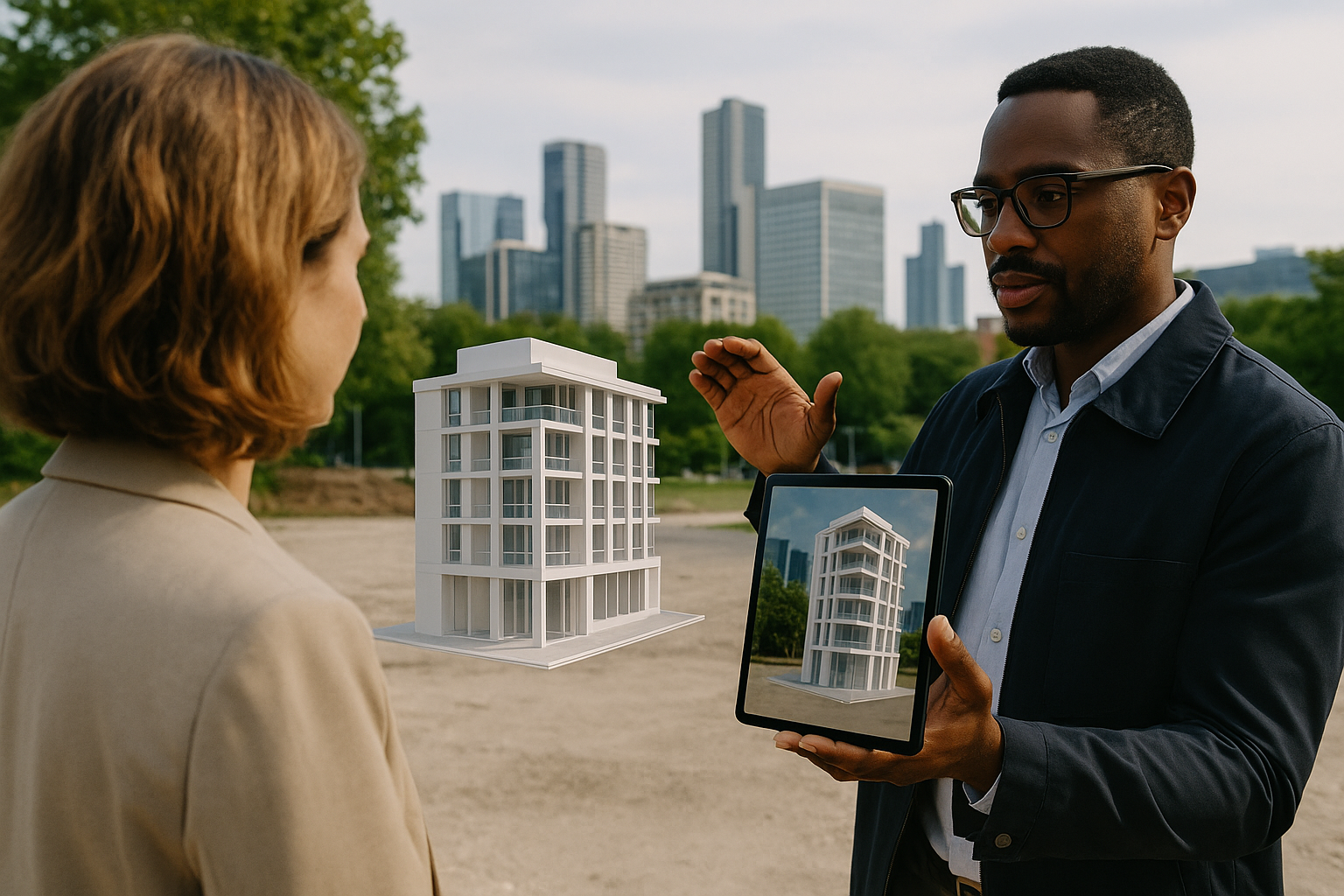One of the biggest challenges in architecture is clear communication—especially when trying to convey abstract design ideas to clients, contractors, or non-technical stakeholders. That’s why many firms now use augmented reality to communicate design intent with AR, ensuring alignment across all project phases.
By using AR, architects can place their 3D models directly into real environments, eliminating ambiguity and speeding up approvals. Instead of relying on technical drawings, clients and teams see the actual form, flow, and function of a design—right where it matters most.
What Does “Design Intent” Really Mean?
Design intent refers to the architect’s vision—the reason behind decisions like material selection, spatial relationships, and visual hierarchy. Traditionally, intent is communicated through drawings, specs, and review meetings.
However, this often leads to:
- Misinterpretation by clients unfamiliar with plans
- Confusion during construction due to unclear visualizations
- Delays from needing constant clarification
Communicating design intent with AR bridges the gap by making the design understandable to everyone involved.
How AR Makes Design Intent Visually Clear
1. In-Context Visualization
AR allows you to overlay the digital model on the actual site. This contextual clarity helps stakeholders:
- Understand massing, alignment, and circulation
- See how lighting or shadow will affect space
- Assess how the design fits its environment
Suddenly, abstract choices become physically relatable.
2. Real-Time Option Comparison
With platforms like AUGmentecture, designers can load multiple model versions into a single AR experience. This empowers you to:
- Present finish variations or spatial alternatives
- Respond to feedback with live visual changes
- Gain faster consensus and avoid second-guessing
3. Cross-Disciplinary Coordination
Engineers, contractors, and consultants can explore the AR model together. This reduces miscommunication and scope creep because everyone sees the same thing—literally.
Use Cases: Communicating Design Intent with AR
Residential Clients and Homeowners
Clients unfamiliar with plans can walk through their future home, visualize cabinetry layouts, or compare window placements—without guessing.
City Approvals and Public Review
For permit approvals or zoning boards, AR provides a powerful visual narrative. You can show massing models in the actual streetscape, making the impact clear.
Contractor Alignment During Construction
Overlaying mechanical layouts or structural elements in AR on-site ensures the design is being executed correctly. It avoids misinterpretation of blueprints in the field.
How AUGmentecture Simplifies AR Communication
With AUGmentecture, you don’t need to be a software developer to create stunning, immersive AR presentations. Key benefits include:
- Model upload from SketchUp, Revit, Rhino, and more
- App-free mobile access for clients and teams
- Version switching to compare options live
- Markerless or anchored model placement
This flexibility allows you to communicate your vision in any context—from the boardroom to the building site.
Real Example: Mixed-Use Building Pitch
A Chicago-based firm used AR to pitch a mixed-use development to investors. By placing the proposed building on its actual corner lot using AR, they demonstrated traffic flow, visibility, and daylight impact. The presentation was a success—and the firm secured funding that day.
“Seeing the building on-site made all the difference,” the client said. “We knew exactly what we were investing in.”
Best Practices for Communicating Design Intent with AR
- Use full-scale models for spatial accuracy
- Keep experiences simple and interactive
- Highlight elements that explain key design decisions (e.g., sightlines, accessibility)
- Practice walkthroughs before presenting to clients or boards
Conclusion
Design intent isn’t just a concept on paper—it’s an experience, a story, and a vision. When you communicate design intent with AR, you give life to that vision in a way everyone can understand.
With tools like AUGmentecture, even the most complex ideas become accessible and compelling—helping you win clients, align teams, and deliver beautiful, intentional architecture.




